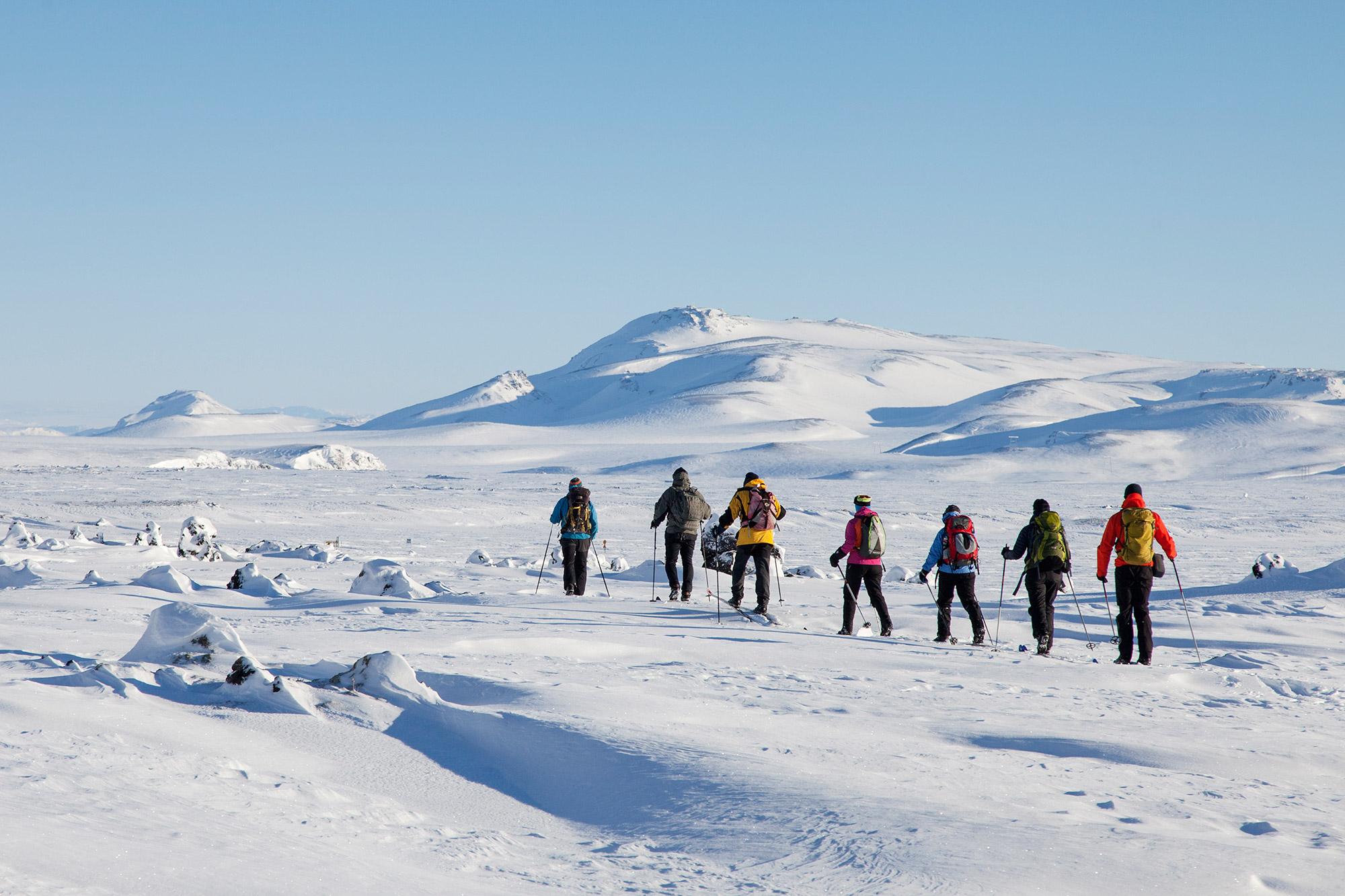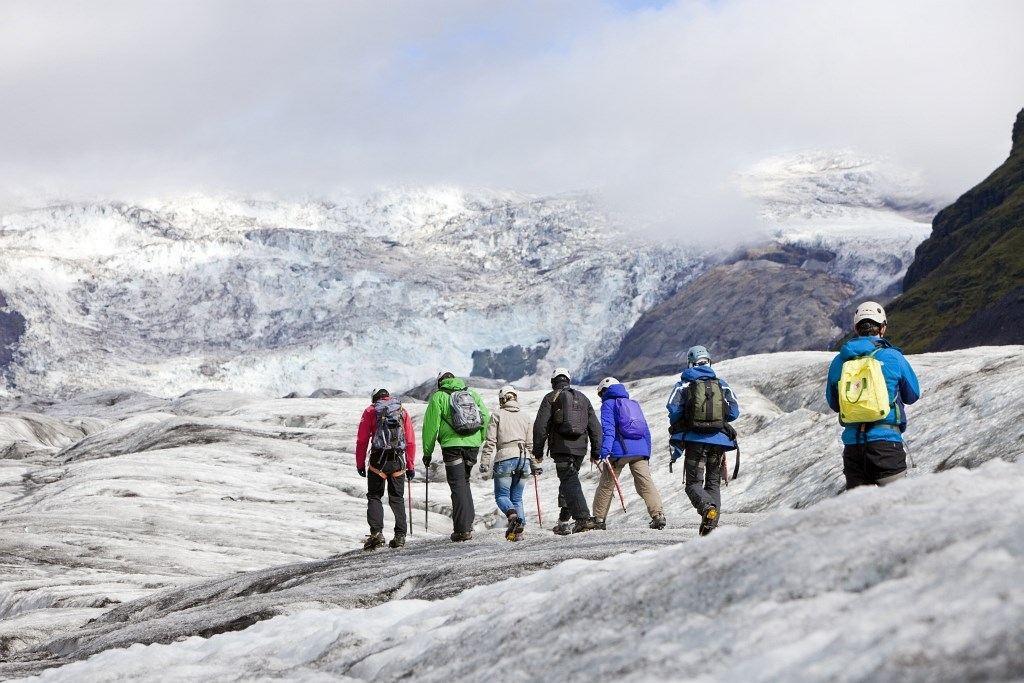The Danger of Cotton in the Extremes of Iceland
| All
Cotton absorbs and retains moisture from the air and from your body, which makes it a dangerous fabric to wear when trekking in the extremes of Iceland.
Iceland is a land of extremes: extreme types of terrain, and extreme and sudden changes in weather conditions. Expeditions in Iceland, be it hiking, cross-country skiing across a glacier, or scaling a rugged peak require proper gear, and one piece of gear you don’t want is clothing made of cotton. Dramatic as it sounds, cotton can kill you.
To know why this is true, several terms needs to be understood:
- Wick/Wicking: to absorb or drain a fluid or moisture, like a wick; 2) a fabric that wicks away perspiration. When dealing with clothing, a fabric that soaks up body moisture and drains it from your skin to the outer surface of the fabric is said to have good wicking properties.
- Hydrophilic: having a strong affinity to absorb water; 2) having a tendency to mix with, dissolve in, or be wetted by water. An hydrophilic fabric gets wet and stays wet — lacks wicking properties, and instead holds the moisture against your skin.

Skaftafell Glacier Tour
Cotton is comfortable, and a good flannel shirt has great thermal properties to keep you warm when you’re dry. Many folks wear denim jeans as a matter of choice. Cotton, however, is an hydrophilic fabric, which means it absorbs water, from the air and from your skin. Your expedition might begin with an easy trek across flat land, but by hour three you might be traversing the side of a volcano. On a warm day, you’ll most likely start to sweat. Because of the terrain, you’ll probably sweat even at temperatures around −1C (30ºF). Once you start to sweat, a cotton garment gets sopping wet. Or maybe, just around a particular bend in the path, you’ll get drenched in a downpour. If that happens, a cotton garment will wear like a soaked log.
Once wet, a cotton garment becomes uncomfortable; It gets heavier — soaks in 27 times its dry weight — loses 95% of its thermal property, and gets clammy on your skin. Also, something else happens. Cotton takes awhile to dry, and as it collects water the air spaces between the threads and in the threads themselves fill with water. Because cotton does not “wick” the moisture away from your body, instead traps your body inside a cold and damp cocoon, you run the risk of hypothermia—the condition when your body temperature drops below 35ºC (95ºF). On average, three people die every year in Iceland from exposure.
A possible scenario: You might begin to sweat while hiking south from Nýidalur to Eldgjá across sandy plains, rough lava, and rugged cliffs, then scaling atop Mýrdalsjökull for a trek across a glacier, only to get caught by a cold Atlantic wind at sunset. In Iceland, the terrain and the weather change at nearly every bend in the path, and around every corner.
To be on the safe side, avoid garments that are denim (jeans), flannel, duck, or corduroy. You will fair the weather better in garments made from lycra, polyester, fleece.
From Icelandic Mountain Guides, Iceland's premiere adventure tour operator. Choose from a great selection of day tours, glacier adventures, multi-day tours and expeditions.
Keep me informed about the Icelandic Mountain Guides Blog
Outdoor adventure in Iceland is our specialty. Subscribe to our free monthly newsletter to learn when to go, what to do and where to have the best adventures in Iceland.